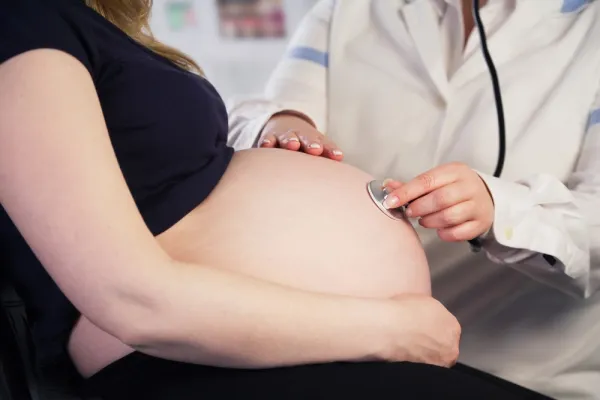Reconcile What You Know About Z Codes With This 7 Q&A Challenge

Think a Z code can’t be a primary diagnosis? Find out if that’s true. Z codes are key elements in a coder’s arsenal. Thinking Z codes are only for supplemental information could land your ob-gyn claims in limbo land. You don’t have to be wary of using your Z codes. Take this quiz and see how you score. Read These 7 Questions Question 1: True or False: You can use Z codes as primary diagnosis codes. Question 2: True or False: You should use Z codes only to represent history of diagnoses. Question 3: When the ob-gyn doesn’t get to the patient in time to deliver the baby (she delivers in the emergency department) but does deliver the placenta (59414, Delivery of placenta [separate procedure]), you should report ________ because the emergency-department doctor will report O80 (Encounter for full-term uncomplicated delivery), assuming there are no other issues complicating the delivery. Question 4: When you’re doing a hepatitis screening test for a non-pregnant ob-gyn patient, you should report _______ in the absence of any symptoms. Question 5: A pregnant patient comes in for enteritis, but the ob-gyn doesn’t order an NST—instead he documents that the patient’s enteritis was incidental to pregnancy. In that case, you should report K52.9 (Noninfective gastroenteritis and colitis, unspecified) and ______. Question 6: If a pregnant patient has been exposed to Parvo but you don’t have the definitive test results back yet, you should use O09.89- (Supervision of other high risk pregnancies) with a sixth digit based on trimester (1, 2, or 3)) and ________ for the diagnoses codes. Question 7: For a patient who has had a tubal ligation but has not made an attempt to have it reversed, the only diagnosis would be _______. Next, compare your responses to these answers. Check Out These Z Basics Answer 1: True. If you’re surprised, take heart. Many coders are hesitant to use the Z codes as primary codes on their claims, but this is perfectly acceptable in many cases, says Dee Mandley, RHIT, CCS, CCS-P, president of D. Mandley & Associates, LLC in Stow, Ohio. Reality: Contrary to what you might have been told in the past, you may — and, on occasion, should — report Z codes as a primary diagnosis. Tip: When ICD-9 was being reported, certain versions of the manual indicated whether you could report a V code as a primary or secondary diagnosis code with the indicators PDx (primary) and SDx (secondary) next to the code descriptor. This table was removed from the official NCHS ICD-9 publications toward the end of its use because they felt that the information was misleading in some circumstances, says Melanie Witt, RN, CPC, MA, an independent coding expert based in Guadalupita, New Mexico. For instance, this table indicated that the V code for contraception could not be used as a primary diagnosis. There is no such table in ICD-10, but the guidelines do address this issue: “Z codes are for use in any healthcare setting. Z codes may be used as either a first-listed (principal diagnosis code in the inpatient setting) or secondary code, depending on the circumstances of the encounter. Certain Z codes may only be used as first-listed or principal diagnosis.” Note: Payers may be more likely to deny claims that list a Z code as the primary diagnosis on the claim. But you can’t choose your codes based on payment. You should follow the official coding guidance. Answer 2: False. Z codes are your keys to documenting chronic conditions or underlying physical or social circumstances that can affect a patient’s current health status or treatment. ICD-10 classifies Z codes into four general categories: Apply Actual Diagnosis Codes Answer 3: Z39.0 (Encounter for care and examination of mother immediately after delivery). Keep in mind that if the ob-gyn provides antepartum care for this patient, you can also report the antepartum visits according to the number of visits and report the appropriate OB code that represents the patient’s condition for those visits. Answer 4: Z11.59 (Encounter for screening for other viral diseases). Because the question states non-pregnant patient, this is the Z code you would use. However, if the patient is pregnant, you would use Z36 (Encounter for antenatal screening of mother) because this is part of the antenatal screening. Answer 5: Z33.1 (Pregnant state, incidental). This code indicates by the way, the patient is also pregnant. If the enteritis is complicating the pregnancy, you should report O99.89 (Other specified diseases and conditions complicating pregnancy, childbirth and the puerperium) along with K52.89 (Other specified noninfective gastroenteritis and colitis) or K52.9 (Noninfective gastroenteritis and colitis, unspecified). You wouldn’t need a Z code in this case. You should note that the physician must state in the documentation that this condition is NOT complicating or is incidental to pregnancy. If this statement is not present, you can then only report O99.89. Answer 6: You should list Z20.828 (Contact with and [suspected] exposure to other viral communicable diseases) as your secondary code to clarify the high-risk nature of the pregnancy at this point. This is because the ob-gyn only suspects the Parvo, but the possible presence of this condition would put the pregnancy at risk. If Parvo is not confirmed, the diagnosis code reverts to Z34.0- (Encounter for supervision of normal first pregnancy …) or Z34.8- (Encounter for supervision of other normal pregnancy …) with a sixth digit based on trimester (1, 2, or 3). If the ob-gyn confirms the Parvo, your diagnosis would change to O98.51- (Other viral diseases complicating pregnancy …) with a sixth digit based on trimester (1, 2, or 3). If the patient is not pregnant and the ob-gyn has not yet confirmed the Parvo, you would use only Z20.828. Answer 7: Z98.51 (Tubal ligation status). You can find this diagnosis code under other procedural status in the Z98 category. Code Z98.51 reflects the reason this patient is sterile. It excludes infertility not due to previous tubal ligation, which would direct you to the N97.0-N97.9 diagnosis codes.




